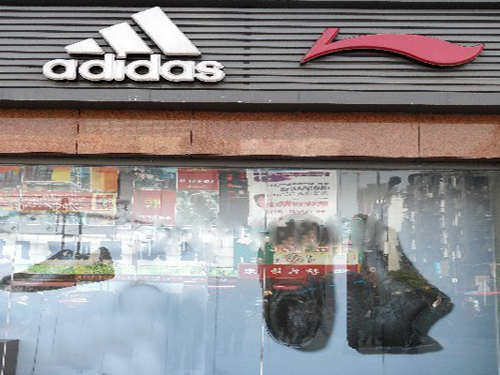 China Guangwang Beijing August 23 (Reporter Feng Yue) According to Voice of China's "Yangguang News" report, following the release of "Fashion Poison - China's Water Pollution Survey for Global Apparel Brands" released last month, Greenpeace There are also the latest surveys. On the morning of (23th) this morning, the organization held a press conference to publicize the results of the investigation of toxic and hazardous substances in global branded apparel.
China Guangwang Beijing August 23 (Reporter Feng Yue) According to Voice of China's "Yangguang News" report, following the release of "Fashion Poison - China's Water Pollution Survey for Global Apparel Brands" released last month, Greenpeace There are also the latest surveys. On the morning of (23th) this morning, the organization held a press conference to publicize the results of the investigation of toxic and hazardous substances in global branded apparel. The toxic and hazardous residues of clothing will endanger people's health. In April-May this year, Greenpeace purchased 78 samples of 15 clothing brands in 18 countries including China, Britain and Argentina, including sportswear and leisure. Clothing and footwear. The origin of these samples involved 13 textile producing countries such as China, Bangladesh, Indonesia, Sri Lanka, and Thailand. Greenpeace sent these samples to qualified third-party laboratories for testing. As a result, 14 out of the 15 clothing brands were found to be problematic. 52 of the sampled 78 samples contained residual toxic and hazardous substances.
The survey results showed that 2/3 of the products including Adidas and Li Ning were detected to contain a substance called NPE. The Chinese name of NPE is nonylphenol ethoxylate. According to Zhang Kai, director of the Greenpeace Pollution Prevention and Control Program, NPE is often used as a surfactant in textile production and is rapidly released into the environment as NP. NP Chinese name is nonylphenol, a recognized environmental hormone, which can stimulate the simulation of estrogen, and has an impact on the biological development of organisms. Therefore, it interferes with the endocrine of organisms and is toxic to the reproductive system. At the same time, NP may also continuously attack organisms through the food chain. Studies have shown that even low levels of NP emissions can be harmful to humans.
There is no evidence that wearing clothing with NPE substances is directly harmful to the human body, but for children, because they may bite these clothes, it is dangerous.
For the problem of how to eliminate the NP component, experts say that manufacturers generally eliminate it by using multiple washing methods. However, after the washed water is discharged into production and life, it is likely to continue to circulate and be recycled into the human body. Therefore, it does not eliminate ** that is harmful to human health.
The reporter noted that most of the manufacturers of these clothing with toxic and hazardous residues are in developing countries. China, Bangladesh, Indonesia, Sri Lanka, and Thailand mentioned in the sample are all developing countries. The EU has banned the use of NPE in production as early as 20 years ago.
Greenpeace released this report, is to hope that consumers more clearly understand the current situation, through consumer pressure on manufacturers. The report mentioned that Greenpeace required these brands to immediately disclose information on the release of toxic and hazardous substances to the public, and pledged to eliminate and eliminate the use and release of toxic and hazardous substances in their production chains.
Woven, Polyester Fabric,Cotton,Sack & Bag For Packing
Woven Interlining,Nonwoven Interlining Co., Ltd. , http://www.nbinterlining.com
![<?echo $_SERVER['SERVER_NAME'];?>](/template/twentyseventeen/skin/images/header.jpg)